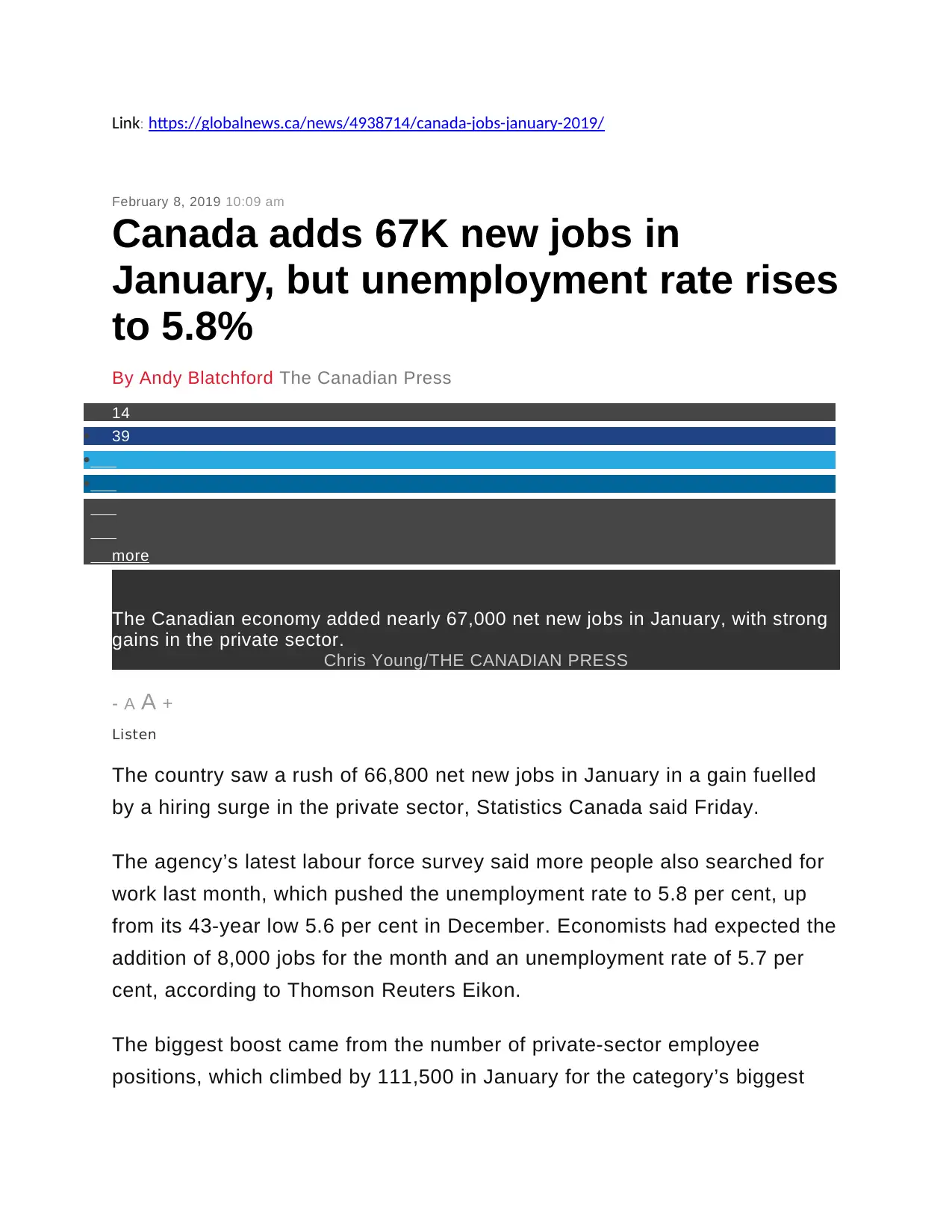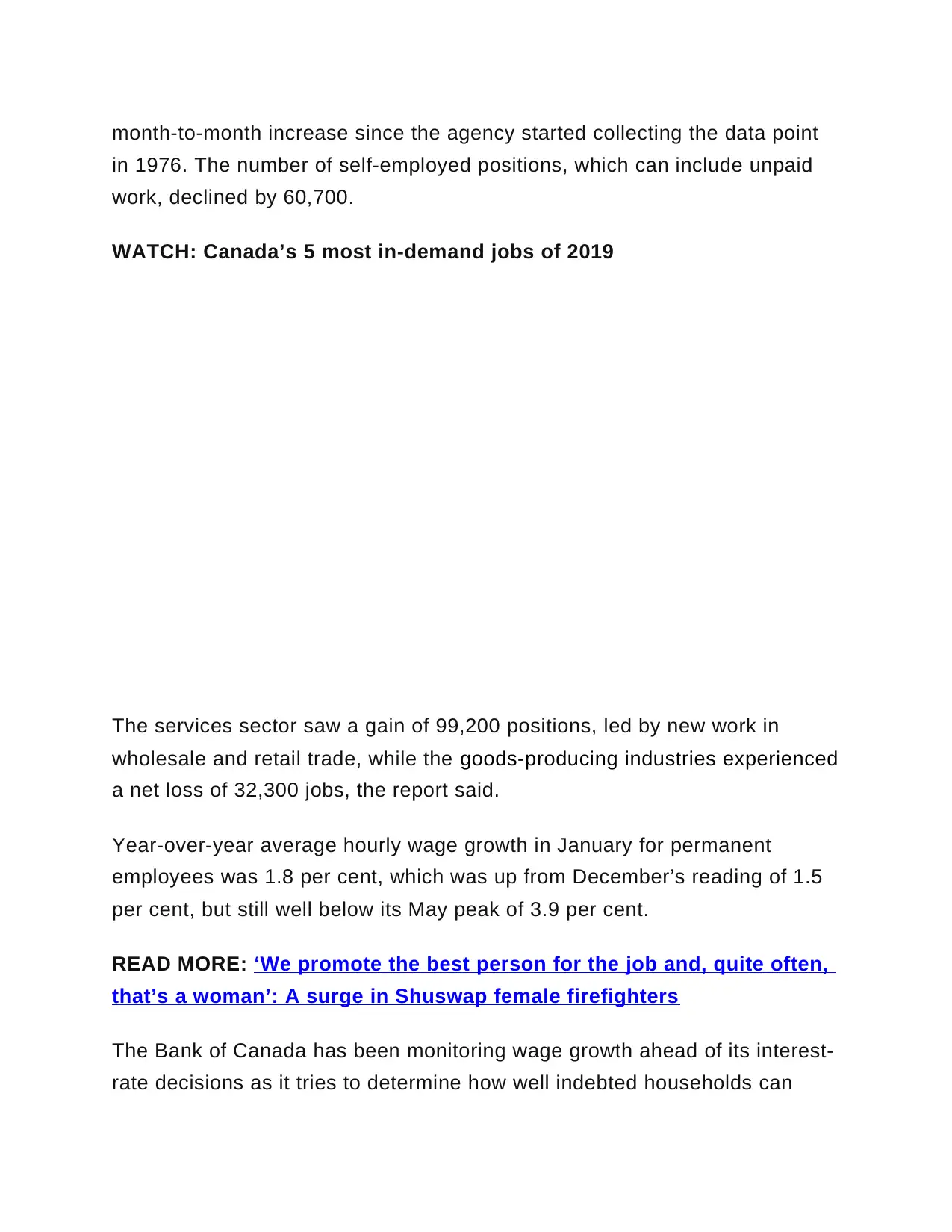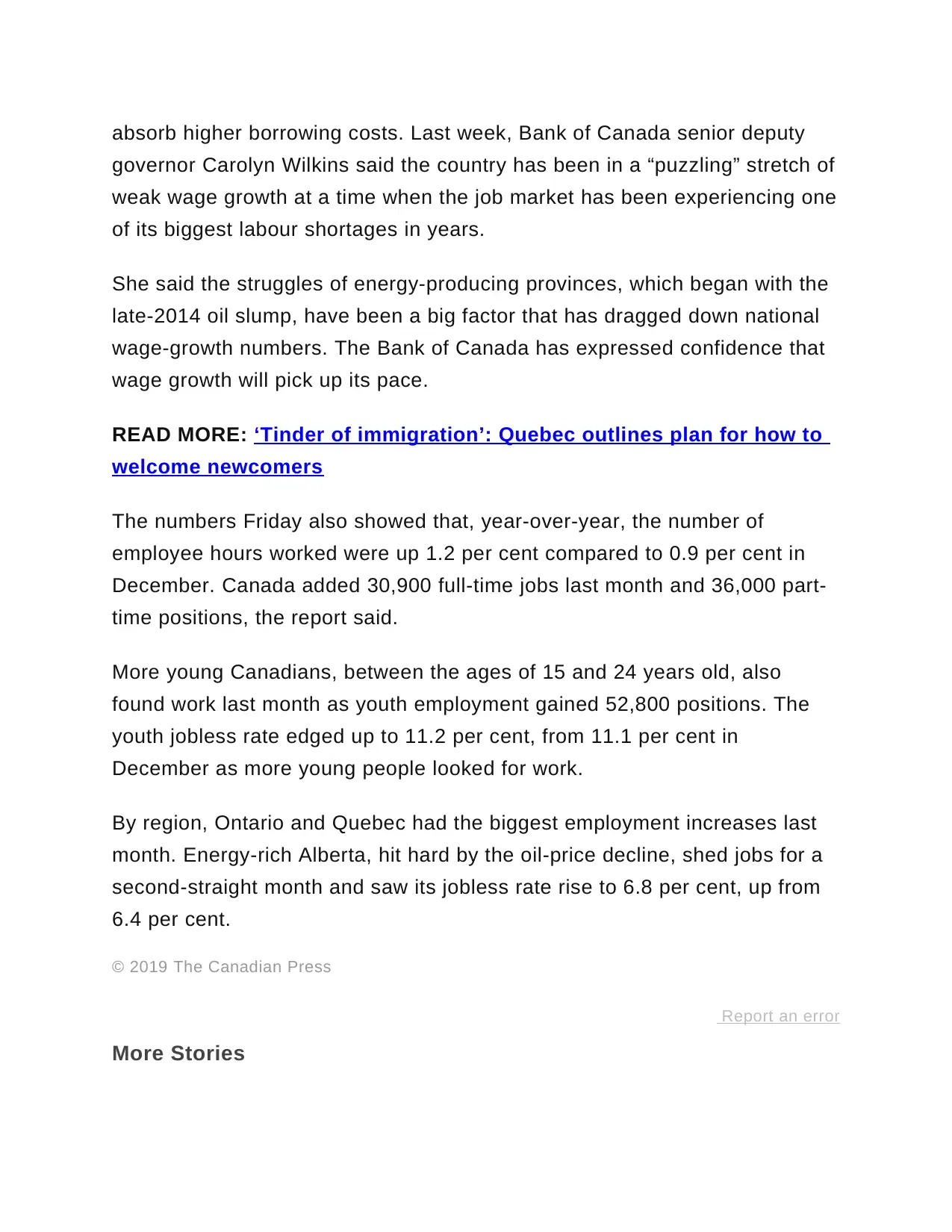Analyzing Canada's Job Market: A Reflection on Economic Theory
VerifiedAdded on 2023/04/11
|3
|548
|299
Essay
AI Summary
This essay is a reflection on how economic theories are evidenced in a current affairs news article focusing on Canada's job market. The article discusses the addition of 66,800 net new jobs in January, driven by a surge in private-sector hiring, while the unemployment rate rose to 5.8%. The reflection explores the connection between these statistics and macroeconomic principles, such as wage growth, labor force participation, and sectoral shifts. It also addresses the Bank of Canada's monitoring of wage growth in relation to interest rate decisions and household debt. The analysis extends to regional variations, particularly the impact of oil price declines on Alberta's employment figures. This essay aims to connect these real-world observations with relevant economic theories.
1 out of 3






![[object Object]](/_next/static/media/star-bottom.7253800d.svg)